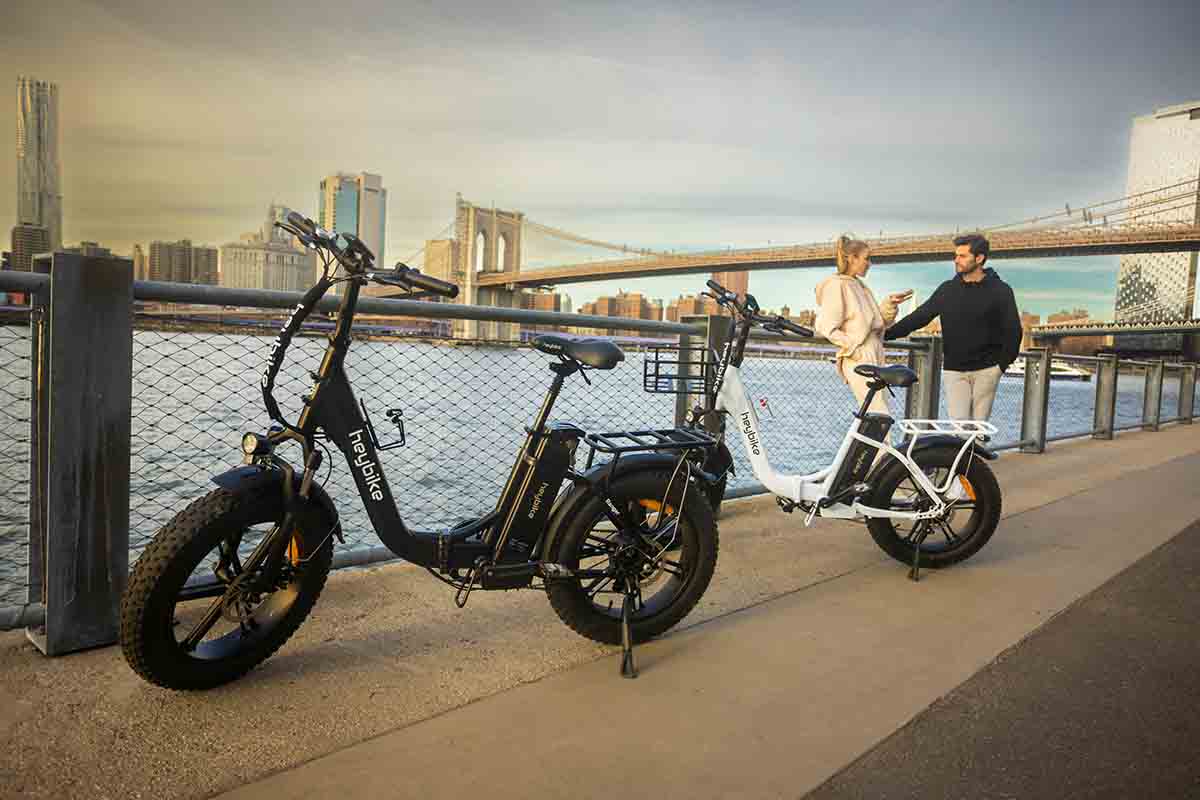Factors to Consider Before Buying an E-bike: A Helpful Guide
Key Points
-
Budget Considerations: E-bike prices vary from budget-friendly to premium models. Know your price range to find a bike that offers the best value for your needs.
-
Bright Bike Lights for Safety: Ensure the e-bike has reliable bright bike lights for night riding, improving visibility and safety in low-light conditions.
-
Performance and Range: Consider the e-bike’s motor power and battery range to match your riding style and ensure it meets your commuting or adventure needs.
The rise of electric bikes (e-bikes) is transforming the cycling world, offering an eco-friendly and efficient alternative to traditional bikes and vehicles.
Whether you’re a commuter, fitness enthusiast, or adventure seeker, e-bikes provide a convenient solution to getting around while promoting a healthier lifestyle.
But before jumping into the world of e-bikes, here are a few essential factors to consider to ensure you choose the right one for your needs.
Budget
Your budget is one of the primary factors to contemplate when considering an e-bike purchase. E-bike prices can vary significantly, ranging from budget-friendly models to high-end, feature-packed machines.
Understanding your budget constraints will help narrow your options and prevent you from being overwhelmed by choices.
E-bikes generally fall into three main price categories: budget, mid-range, and premium.
Budget e-bikes often have fewer features but can provide a cost-effective entry point into the world of electric biking. Mid-range models balance affordability and performance, making them suitable for most riders.
Premium e-bikes come with top-of-the-line components, advanced technology, and superior build quality, catering to riders who demand the best.
Bright Bike Lights for Safety
Safety is a top priority, and a key component to consider is the bike’s bright bike lights.
Whether you’re commuting at night or taking an evening ride, having reliable lights is essential for visibility.
Look for e-bikes with built-in bright bike lights or plan to purchase them separately for a safer ride, especially in low-light conditions.
Type of Motor
When selecting an e-bike based on the type of motor, there’s one key comparison: hub vs mid drive e-bikes.
These two motor types differ significantly in how they power your e-bike and affect its overall performance.
Hub motors are located in the wheel hub (either the front or rear) and are known for their simplicity and affordability.
They provide a smooth and quiet riding experience, making them an excellent choice for urban commuters. Hub motors are ideal for flat terrain and less demanding riding conditions.
On the other hand, mid-drive motors are situated at the bike’s center, near the pedals.
This positioning allows for better weight distribution and improved balance. Mid-drive motors are well-suited for hilly terrains and off-road adventures, providing more torque and better power efficiency.
Battery Capacity and Range
The heart of any e-bike is its battery, and understanding battery capacity and range is essential for choosing the right e-bike for your needs.
The battery’s capacity is measured in watt-hours (Wh), which indicates how much energy it can store.
In general, higher watt-hour ratings result in longer rides between charges.
When evaluating battery capacity, consider your typical riding habits.
A smaller battery may suffice if you plan to use your e-bike for short, occasional rides.
However, if you have longer commutes or enjoy extended weekend adventures, a higher-capacity battery is advisable to ensure you don’t run out of power mid-ride.
Frame Style and Size
The e-bike’s frame is another crucial aspect to consider, as it greatly affects your comfort and riding experience.
E-bikes come in various frame styles, including step-through, traditional diamond, and cargo frames. Each style serves different purposes and depends on your riding style and preferences.
Step-through frames, often seen on city and commuter e-bikes, provide easy mounting and dismounting, making them an excellent choice for riders who want convenience and comfort. These frames are especially popular among commuters and seniors.
Riding Terrain
When choosing an e-bike, one of the most critical factors to consider is the terrain you’ll be riding on regularly.
Different e-bike models excel in various environments, so understanding your typical riding terrain is essential for a satisfying riding experience.
If your e-bike adventures primarily take you through urban environments, such as city streets and paved bike paths, a commuter or city e-bike may be the ideal choice. These e-bikes are designed for smooth, flat surfaces and are well-suited for daily commuting and leisurely rides in the city.
Legal Regulations
Before you start e-bike shopping, you must familiarize yourself with the legal regulations governing e-bikes in your region.
E-bike regulations can vary significantly from one place to another, affecting where and how you can ride your e-bike.
E-bikes fall into different classifications, typically based on their maximum speed and motor power.
The primary classifications are pedal-assist (Class 1) and throttle-controlled (Class 2) e-bikes. Class 1 e-bikes assist only when you pedal, while Class 2 e-bikes can be operated with a throttle, like a scooter.
Buying an E-bike: Maintenance and Repairs
Owning an e-bike comes with responsibilities, and regular maintenance is crucial to e-bike ownership.
Understanding the maintenance requirements and potential repair costs can help you make an informed decision when purchasing an e-bike.
E-bikes consist of complex components, including the motor, battery, drivetrain, and electrical systems.
Regular maintenance, such as checking tire pressure, lubricating the chain, and inspecting the brakes, is essential to keep your e-bike running smoothly. Neglecting maintenance can lead to performance issues and costly repairs down the road.
Accessories and Customization
Customizing your e-bike to suit your needs and preferences can greatly enhance your riding experience. E-bikes offer numerous opportunities for personalization and accessorizing, allowing you to tailor your bike to your unique requirements.
Popular e-bike accessories include racks, panniers, fenders, lights, and bells.
A rear rack and panniers can transform your e-bike into a versatile cargo hauler, perfect for groceries or commuting gear. Fenders help keep you clean and dry when riding in wet conditions, and lights ensure you’re visible and safe during nighttime rides.
Test Rides and Reviews
While researching e-bikes online and reading reviews can provide valuable insights, there’s no substitute for the firsthand experience of a test ride. T
aking the time to test-ride different e-bike models is a crucial step in the buying process, as it allows you to assess how a particular e-bike feels and performs.
During a test ride, consider factors such as comfort, handling, and responsiveness.
Does the e-bike provide a smooth and enjoyable ride? Is the seating position comfortable for extended rides? How does it handle corners and turns?
These are all essential questions to answer before making a purchase.
Buying an e-bike: Conclusion
Purchasing an e-bike is a decision that requires careful consideration of several key factors.
Remember that your e-bike is an investment in both your health and the environment.
By taking the time to research and choose the right e-bike, you can enjoy countless miles of eco-friendly, effortless, and enjoyable rides.
Whether you’re commuting to work, exploring scenic routes, or embarking on new adventures, an informed e-bike purchase will provide you with years of riding pleasure. So, consider these factors wisely, and start your e-biking journey with confidence.




















